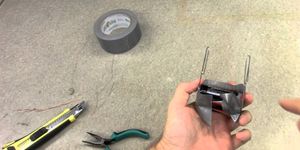The ESA Wants to Build Habitation on the Moon by the 2030s
We all know by now that NASA wishes to create a habitable environment on Mars for humans, but the limited funds and lack of technology at this day and age marks the possibility for such a feat to happen some time decades from now. Congress recently told NASA that they needed to create a prototype of a Mars habitation by 2018, but such a prototype is just that, and still isn’t ready for the big time.
NASA isn’t the only space agency interested in deep space travel and habitation. The European Space Agency is also interested in creating a similar scenario on the Moon. In fact, the ESA hopes that mankind could accomplish habitation on the Moon through a 3D-printed habitat some time in the decade of 2020-2030.

The habitation attempt will have humans living on the Moon alongside their robotic partners to help learn more about the Lunar surface and the so-called resources that the Moon has that we continue not to take advantage of.
Details about the plans were discussed at the December 15th two-day symposium held by the European Space Agency at the European Space Research and Technology Center in Noordwijk, Netherlands. The symposium, which was entitled “Moon 2020-2030 – A New Era of Coordinated Human and Robotic Exploration,” can be read about here.
Such a lunar habitation environment might make a good upgrade from the International Space Station. For one, a lunar habitation environment would be far easier to transport goods to, as docking would be less difficult, but it also gives us a use for the modern reusable rocket technology that has been on the to-do lists of major space companies, such as SpaceX and Blue Origin.
What’s more is with scientists and robots inhabiting the same land off Earth, data will be easier to collect, analyze, and share with the rest of the world. Humans would also have a greater presence in the event of robotic failure, mechanical upgrades, or sampling, which would reduce costs and improve reliability of systems.
The ESA believes that starting with the Moon is a good first step for NASA’s vision to inhabit Mars, especially since the Moon is closer and it gives us a good learning ground for a deep-space mission.
Source: Space.com








